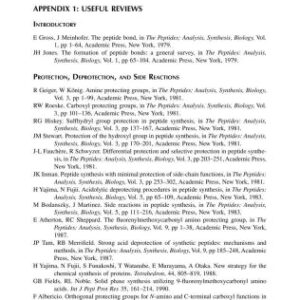The biological activity of mycotoxins ranges from weak and/or sometimes positive effects, such as antibacterial activity (see penicillin derivatives derived from Penicillium strains) to strong mutagenic (e. g. aflatoxins, patulin), carcinogenic (e. g. aflatoxins), teratogenic, neurotoxic (e. g. ochratoxins), nephrotoxic (e. g. fumonisins, citrinin), hepatotoxic, and immunotoxic (e. g. ochratoxins, diketopiperazines) activity.
Nowadays, many laboratories around the world are specialized in the detection of mycotoxins in food products and contaminated material found in housing.
In this volume, a focus on the most important classes of mycotoxins is provided and their chemistry of the last ten years is discussed. In each Section, the individual biological impact is outlined. Sections are arranged according to mycotoxin classes (e. g. aflatoxins) and/or structural classes (e. g. resorcinyl lactones, diketopiperazines). The biology of mycotoxins is also described.
Chemistry
[PDF] The Chemistry of Mycotoxins Stefan Br?se, Franziska Gl?ser, Carsten Kramer, Stephanie Lindner, Anna M. Linsenmeier, Kye-Simeon Masters, Anne C. Meister, Bettina M. Ruff, Sabilla Zhong (auth.)
$19.99

![[PDF] The Chemistry of Mycotoxins Stefan Br?se, Franziska Gl?ser, Carsten Kramer, Stephanie Lindner, Anna M. Linsenmeier, Kye-Simeon Masters, Anne C. Meister, Bettina M. Ruff, Sabilla Zhong (auth.)](https://pdfelite.com/wp-content/uploads/2024/04/2e162d61f0e88243d1bfa029877f8446-d.jpg)




Reviews
There are no reviews yet.